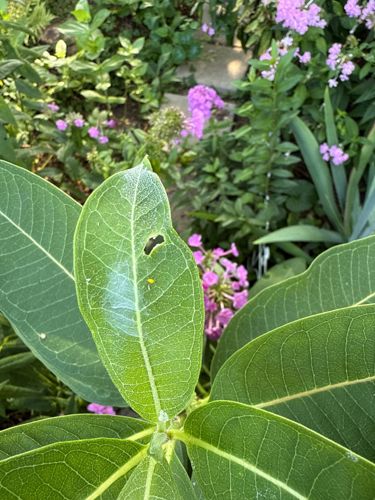Monarch Butterfly Caterpillar
Scientific Name: Danaus plexippus
Order & Family: Order: Lepidoptera, Family: Nymphalidae (Brush-footed butterflies)
Size: Newly hatched caterpillars are tiny, around 2-6 mm. They grow significantly, reaching up to 4.5 cm (1.8 inches) in their final instar before pupation.

Natural Habitat
Gardens, meadows, fields, and any areas where milkweed plants are abundant, especially in North and South America.
Diet & Feeding
Strictly milkweed leaves (Asclepias species). The caterpillars are specialists and rely solely on milkweed for their development.
Behavior Patterns
Monarch butterfly caterpillars are avid feeders, primarily consuming milkweed leaves. They undergo five instars (developmental stages between molts) before forming a chrysalis to pupate. The single yellow caterpillar visible is likely in a very early instar due to its small size. The white area could be a result of previous feeding by a caterpillar (the damaged leaf suggests this), or possibly a fungal growth on the leaf, though less likely to be directly related to the observed caterpillar.
Risks & Benefits
Benefits: Monarch caterpillars are crucial for the monarch butterfly life cycle, which is a significant pollinator. Monarchs are an iconic species, and their conservation is important. Risks: Primarily risks to the milkweed plant they feed on, as they can defoliate plants significantly if populations are high. No direct risks to humans; they are harmless.
Identified on: 8/15/2025